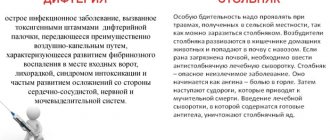Results
Fluorography during breastfeeding is not a prohibited or harmful procedure for the baby. The X-ray dose is 0.5 mSv on a film machine, and 10 times less on a digital fluorograph, which is safe for the health of the mother and baby. If you are forced to go to work or study, fluorography can be done without fear. However, unless necessary, it is recommended to postpone examination of the chest organs until the end of the lactation period.
In case of urgent indications (symptoms of tuberculosis, being in contact with a patient with an open form of tuberculosis, etc.), the referral for FLG cannot be ignored. Diagnostics will allow timely detection of the disease, minimize complications for the woman, and protect the baby from infection.
What is fluorography: description of the procedure
The technique is characterized by photographing the lungs in X-rays. The image is displayed on a fluorescent screen. Parts of the human body absorb radiation unevenly, so bones are clearly visible in the picture, while other parts of the body are invisible (lung tissue) or translucent (large vessels, heart).
The film technique is common in clinics and hospitals, but recently it has been replaced by a digital one, with a reduction in radiation exposure to the patient’s body.
Fluorography is used to exclude or detect diseases of the pulmonary system: bronchitis, pneumonia, tuberculosis, neoplasms. The test is carried out annually.
Too frequent X-ray examinations can lead to the formation of tumors many years and 10 years later, but this risk is considered to be very small (it can be compared with the natural dose of background radiation [5]). Thus, according to one Oxford University study, by age 75, X-rays increased the risk of cancer by 0.6-1.8% in 13 of the 14 countries examined, and in one country (Japan), which had the highest annual exposure rate in world, this figure is just over 3% [1].
The difference between fluorography and x-rays
Fluorography and radiography are procedures that examine the structure of the body using x-rays. Their main difference is in detail: x-rays display the image in full size and are used as prescribed by a doctor.
Characteristics of fluorography:
- radiation dose – 0.01-2.5 mSv [2, table. 6.1];
- the image is less clear, formations measuring 6 mm or more are visible;
- the purpose of the study is prevention (once a year);
- used to study the lungs;
- contraindications: period before conception, pregnancy, children under 14 years of age;
- the price of the procedure is 4-5 times less than the cost of radiography.
X-ray characteristics:
- radiation dose – 0.01-1.6 mSv [2, table. 6.1];
- the image is clear, pathological formations measuring 2 mm or more are visible (this allows timely diagnosis of the smallest cancerous formations);
- the purpose of the study is to diagnose the suspected disease;
- used to study any organs and systems;
- frequency of use - as needed (for example, in case of bone fractures, repeated scanning is required);
- contraindications: period of conception, pregnancy, postpartum period, menstruation (contraindications are relative, there are exceptions);
- expensive procedure.
General recommendations for nursing mothers
There is no special preliminary preparation for FLG for nursing mothers (as for other patients). All that is necessary for a successful procedure is to choose the right time between feedings.
The child should be fed so that he does not have to be put to the breast immediately after irradiation. In addition, a woman should not worry, since the mother’s anxiety is always transmitted to the baby. Fluorography during lactation is performed as usual as prescribed by a doctor.
A woman should follow simple recommendations:
- undergo examination only as prescribed by a doctor, if a situation arises that requires urgent monitoring of respiratory health (routine fluorogram should be abandoned);
- if possible, take an X-ray using a digital fluorograph or ask your doctor for a referral for an X-ray (this will reduce the radiation dose);
- feed the baby immediately before the procedure;
- Use lead protection when taking the photo.
It is necessary to come to the examination in a calm psycho-emotional state. Due to the insignificant radiation exposure, breastfeeding after fluorography is allowed (taking into account that the baby has eaten before the procedure, it will be possible to attach it to the breast only 2-3 hours after FLG).
Medical research and procedures for breastfeeding mothers
During the period of breastfeeding, it can be said without exaggeration that almost every nursing mother is faced with the need to carry out certain medical procedures and diagnostic tests. And, of course, you want to be sure that these procedures will not affect either lactation or the baby.
When carrying out medical procedures, a nursing mother must verify the need for this study. You can often come across the opinion that after procedures such as fluorography, x-rays, computed tomography or magnetic resonance imaging, you should stop breastfeeding for some time (from several hours to several days). However, research shows that this is not always the case. In this article we will try to consider the possibility of conducting basic medical research on breastfeeding.
Ultrasound diagnostics does not affect breastfeeding in any way and has no restrictions for use in nursing mothers.
A biopsy of breast tissue may be indicated for mothers if it is necessary to determine the nature of the lump in the breast. This quick, virtually painless procedure is often performed without even the use of local anesthesia and does not affect breastfeeding. [2]
Gastroscopy and colonoscopy. A nursing mother may be faced with the need to undergo diagnostic procedures such as gastroscopy or colonoscopy. These manipulations can be carried out without restrictions during breastfeeding. During gastroscopy, lidocaine is often used, but this drug is compatible with breastfeeding, in addition, it is used topically (in the form of an aerosol) and does not cause harm to a breastfeeding baby. Some patients prefer to have gastroscopy and colonoscopy performed under general anesthesia, but even in this option, a nursing mother will be able to resume breastfeeding almost immediately after the cessation of general anesthesia (check with your anesthesiologist for the name of the drug for general anesthesia, and we will tell you the exact period time after which it will be safe to breastfeed again).
Mammography can be performed during lactation, but the result of mammography will be quite difficult to interpret and evaluate due to natural changes in breast tissue during lactation. During breastfeeding, a mammogram can be useful in determining the size and location of known tumors and lumps, but may not always detect changes in the soft tissue of the lactating gland. If a mammogram is indicated for a nursing mother, it is best to consult a doctor who has experience in performing this procedure during lactation. It also makes sense to take your baby with you and feed him immediately before the test to reduce the amount of milk in the ducts and make the mammogram more readable. [2]
Fluorography during breastfeeding can also be done, but it is advisable to carry it out only when indicated. If possible, it is better to postpone fluorography for preventive purposes until the child is finished feeding.
X-ray with guards . As modern research shows, there is no reason why a mother should temporarily wean her baby because of an x-ray. Breast milk is not affected by x-rays and the mother can feed the baby immediately after the examination. [2] CT and MRI without contrast. Both of these procedures do not affect breast milk or breastfeeding in general. The electromagnetic field and radio waves used in this diagnostic method do not cause changes in the composition of milk. [8]
X-ray with contrast agent, computed tomography and magnetic resonance imaging. Many radiologists advise a nursing mother to stop feeding for a certain period of time, for example, after an X-ray of the kidneys, a lymphangiogram, or after an X-ray of the gallbladder. This is due to the fact that these types of studies are carried out with contrast agents, which are used to enhance the visualization of various organs and tissues.
Two types of radiocontrast agents are commonly used: one group contains high concentrations of iodine; the other group contains gadolinium ions. A group of iodinated radiocontrast agents are used for computed axial tomography (CT), while gadolinium products are used for magnetic resonance imaging (MRI).
In general, it is recommended to refrain from using iodine-containing products while breastfeeding. But in the case of radiocontrast agents, the iodine molecule is covalently bound to the base and thus the number of free iodine molecules is minimal, so they are not considered to be a risk factor for a breastfeeding baby. In addition, the plasma half-life of these substances is very short (less than 1 hour for most), and their bioavailability through milk is virtually zero. Although manufacturers of x-ray materials always advise that you stop feeding for about 24 hours after these procedures, this is not necessary. [1,2,4]
For example, barium, used in diagnostic studies of the digestive system, is not absorbed by the mother or child and does not affect breastfeeding [1,2]
The famous pediatrician Dr. Newman writes about this: “...most radiologists admit that there is no need for this, because the amount of iodine penetrating into the milk will be negligible and will not affect the child. Despite this, they still prohibit feeding after these procedures because it is recommended by the manufacturer and none of them want to take the risk. The fact that many of these tests are also done on children with the same contrast agents somehow does not make them think about what exactly they are worried about. The answer, of course, is that we are not worried about mothers or children, but about being held accountable despite the fact that most likely nothing will happen...” [3] Magnetic resonance imaging is also not reason to stop feeding for 24 hours. The contrast material used for MRI is gadopentetic acid, a compound with a very short half-life (less than an hour) that is completely eliminated from the mother's body over the next 6 hours [3]. It has also been reported that the level of gadopentetic acid in breast milk is very low. Only 0.23 percent of the maternal dose was excreted in milk more than 24 hours after the study. Additionally, the oral bioavailability of gadolinium products is approximately 0.8 percent [6]. Thus, there is no reason to stop breastfeeding after an MRI, despite the fact that the manufacturers of the substances recommend a break of 24 hours [3]. Dr. Thomas Hale also writes that no side effects have been reported in children whose mothers took radiocontrast agents while breastfeeding [1].
Use of radioisotopes . Radioactive substances are commonly used to diagnose or treat thyroid disease, heart disease, tumors, and other problems. In general, the dose required for a diagnostic study will be less than the usual therapeutic dose. When radioactive substances are used, in many cases the child must be weaned, at least for a while, because Radioactive substances tend to accumulate in milk and reach the baby. Weaning time depends on the type of radioactive substance and dose (see the table at the bottom of the page for more information).
Breastfeeding mothers should discuss with their doctor all possible diagnostic alternatives (blood tests, ultrasound, CT, MRI) to be absolutely sure of the need to use radioactive substances and discuss with the doctor the possibility of using a substance with the shortest elimination period. If the mother and her doctor come to the conclusion that a diagnosis with a radioactive isotope is necessary, then the nursing mother can express the required amount of milk in advance to feed the baby during temporary weaning.
Typically, radioisotopes used as diagnostic agents have fairly short half-lives and do not pose a major problem for breastfeeding. Breastfeeding moms can simply pump and empty their milk for 12 to 24 hours before resuming breastfeeding. [4]
However, when using Iodine-131, Gallium-67, or Thallium-201, longer periods of abstinence from breastfeeding may be necessary, which will interfere with breastfeeding.
The most dangerous radioisotope listed is Iodine-131. It accumulates in human milk and can potentially have a very negative effect on the baby's thyroid gland, and can also significantly increase the baby's risk of thyroid carcinoma if the baby receives this substance through mother's milk. Women who require treatment with Iodine-131 should stop breastfeeding for several weeks before using the substance, because Research shows that if breast tissue is active (due to breastfeeding or pumping), about 40% of the radiation dose will be delivered to the breast, increasing the mother's risk of developing breast cancer [5]. Weaning for a few weeks allows the gland tissues to go through the stage of involution and return to their pre-pregnancy state [2].
Dr. Newman believes that studies using radioactive isotopes should be carried out for breastfeeding women when the importance of the examination outweighs the risk of radiation to the child. “The most commonly used radioactive component for such studies is teknetium-99,” he writes, “it is used to examine the lungs, bones, brain, etc. Its half-life is 6 hours, so 98% of it will be eliminated from the mother body in 30 hours. Does this mean that the mother should stop feeding for 30 hours? Many will say that this will be the best solution. However, I think it's too long. A child may receive some radiation exposure; we rarely hesitate before performing a chest x-ray on a child, for example. Of course, it is better to avoid radiation that you can do without, but there is still a point where the risk is infinitesimal. If the mother waits 12 hours (2 half-lives), 75% of the radiation will have already been eliminated from her body. Each mother, together with her healthcare provider, must decide on a case-by-case basis whether the risk of breastfeeding after exposure to radioactive substances outweighs the risk of formula feeding." [3]
The most comprehensive source of information on the compatibility of radioisotopes and breastfeeding is published by the Nuclear Regulatory Commission (NRC). Breastfeeding mothers who need to use radioisotopes due to their health conditions can use this information [4].
Example of typical recommendations for the compatibility of radioisotopes and breastfeeding [7]
| Radioactive drugs | Example of typical weaning recommendations |
| I-131 NaI | Complete weaning (for a given child) |
| I-123 NaI | Weaning is not necessary |
| I-123 OIH | Weaning is not necessary |
| I-123 mIBG | 24 hours for 370 mBq (10 mCi) |
| I-125 OIH | Weaning is not necessary |
| I-131 OIH | Weaning is not necessary |
| Tc-99m DTPA | Weaning is not necessary |
| Tc-99m MAA | 12.6 hours for 150 mBq (4 mCi) |
| Tc-99m Pertechnetate | 24 hours for 1,100 mBq (30 mCi), 12 hours for 440 mBq (12 mCi) |
| Tc-99m DISIDA | Weaning is not necessary |
| Tc-99m Glucoheptonate | Weaning is not necessary |
| Tc-99m HAM | Weaning is not necessary |
| Tc-99m MIBI | Weaning is not necessary |
| Tc-99m MDP | Weaning is not necessary |
| Tc-99m PYP | Weaning is not necessary |
| Tc-99m Red Blood Cell In Vivo Labeling | 6 hours for 740 mBq (20 mCi) |
| Tc-99m Red Blood Cell In Vitro Labeling | Weaning is not necessary |
| Tc-99m Sulfur Colloid | 6 hours for 440 mBq (12 mCi) |
| Tc-99m DTPA Aerosol | Weaning is not necessary |
| Tc-99m MAG3 | Weaning is not necessary |
| Tc-99m White Blood Cells | 24 hours for 1,100 mBq (5 mCi), 12 hours for 440 mBq (2 mCi) |
| GA-67 Citrate | 1 month for 150 mBq (4 mCi), 2 weeks for 50 mBq (1.3 mCi), 1 week for 7 mBq (0.2 mCi) |
| Cr-51 EDTA | Weaning is not necessary |
| In-111 White Blood Cells | 1 week for 20 mBq (0.5 mCi) |
| Tl-201 Chloride | 2 weeks for 110 mBq (3 mCi) |
The duration of breastfeeding interruption is chosen to reduce the maximum dose to the newborn infant to less than 1 millisievert (0.1 rem), although the regulatory limit is 5 millisieverts (0.5 rem). The actual doses that most infants would receive would be less than 1 millisievert (0.1 rem). Of course, the doctor can use these recommendations at his own discretion, increasing or decreasing the required duration of interruption of breastfeeding. [7].
In this article, we told you whether it is possible to do fluorography, x-rays, MRI, ultrasound and other procedures while breastfeeding. You may be interested in our other articles about the health of nursing mothers.
Call a consultant Do you have any questions? +7 (812) 956-3-954
Literature:
- Hale T., Medications and Mother's Milk, 10th edition, Amarillo, TX 2002.
- Mohrbacher N., Stock J., La Leche League International, The Breastfeeding Answer Book, Third Revised Edition, 2008
- Newman J., Pitman T., The Ultimate Breastfeeding Book of Answers (Revised and Updated), NY, Three Rivers Press, 2006
- Riordan J., Auerbach K., Breastfeeding and Human Lactation, Jones and Bartlett, Boston, 1999
- Robinson P. et al , Iodine-131 in breast milk following therapy or thyroid carcinoma. J Nucl Med 1994; 35, p:1797-1801.
- Rofsky N., Weinreb J., Litt A., Quantitative analysis of gadopentetate dimeglumine excreted in breast milk. J Magn Reson Imaging 3 p:131–132, 1993.
- US Nuclear Regulatory Commission . Nuclear Regulatory Commission Guideline 8.39. Washington, DC, April 1997
- E-lacatancia. Marina Alta Hospital https://e-lactancia.org/sinonimo/935
Alena Lukyanchuk, psychologist, lactation consultant
Alena Korotkova, clinical psychologist, lactation consultant










